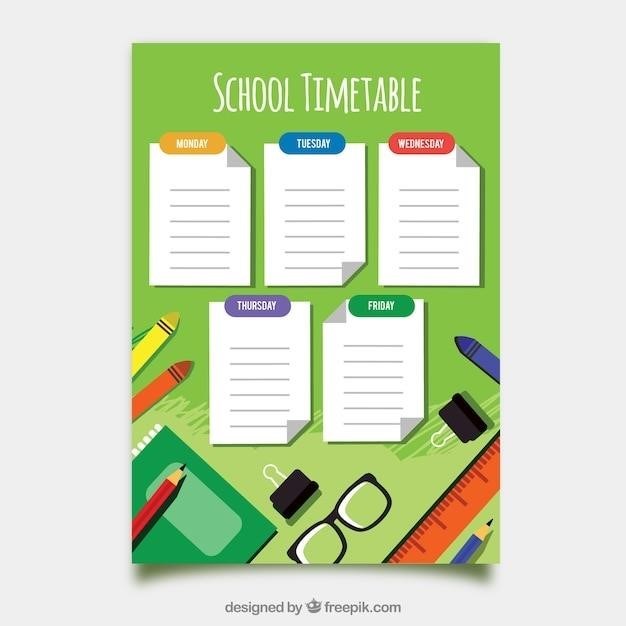Catholic quiz questions and answers, along with tips to enhance your learning journey. Part 1⁚ A Journey Through Catholic Doctrine and History. Page 2. 2.
Page 1. 1. 200 Questions and Answers. On the Catholic Faith. By Msgr. Charles Pope. Appeared in. Our Sunday Visitor. 2012-2014. Page 2. 2. Introduction⁚.
This quiz can help your students and their families review our Catholic faith. Find the answer key on page 3. a) meat b) fruit c) vegetables d) video games.
Only the teaching authority of the Catholic Church can know what is true in faith and morals because Christ promised that the Holy Spirit would reveal all truth…
Introduction
Catholic quizzes are a fun and engaging way to test your knowledge of the Catholic faith. Whether you are a lifelong Catholic or just starting to explore the faith, these quizzes can help you deepen your understanding of Catholic doctrine, history, and practices. They can also be a great way to learn about the lives of Catholic saints and figures, as well as the structure of the Catholic Church.
There are many different types of Catholic quizzes available, ranging from simple multiple-choice questions to more challenging trivia games. Some quizzes focus on specific topics, such as the Bible or Catholic history, while others cover a broader range of subjects. You can find Catholic quizzes online, in books, or even in Catholic magazines.
There are many benefits to taking Catholic quizzes. They can help you to learn new things, to reinforce what you already know, and to challenge yourself intellectually. They can also be a fun way to spend time with family and friends.
If you are looking for a way to learn more about the Catholic faith, or simply to have some fun, then taking a Catholic quiz is a great option. There are many resources available online and in print, so you are sure to find a quiz that is right for you.

Types of Catholic Quizzes
The realm of Catholic quizzes encompasses a diverse array of formats and topics, catering to various levels of knowledge and interests. These quizzes can be categorized into several types, each offering a unique learning experience.
One common type is the Bible Trivia Quiz, which focuses on testing your familiarity with the Bible’s stories, characters, and teachings. These quizzes often involve multiple-choice questions, true or false statements, or matching exercises. Another popular category is Catholic Doctrine and History Quizzes, which delve into the core beliefs and historical events of the Catholic Church. These quizzes may cover topics such as the sacraments, papal pronouncements, or significant figures in Church history.
For those interested in the practical aspects of faith, Catholic Liturgy and Practices Quizzes provide insights into the rituals, ceremonies, and daily devotions of Catholicism. These quizzes might ask about the meaning of different liturgical colors, the steps of the Mass, or the significance of various prayers.
Additionally, Catholic Moral Theology Quizzes explore the ethical teachings of the Church, examining issues such as bioethics, social justice, and personal conduct. These quizzes challenge your understanding of Catholic principles and their application to real-life situations.
Finally, Catholic Church Structure Quizzes aim to elucidate the organizational hierarchy of the Catholic Church, from the papacy to the local parishes. These quizzes might ask about the roles of bishops, cardinals, or the different types of religious orders within the Church.
Catholic Doctrine and History
Catholic doctrine and history form the bedrock of the Catholic faith, providing a framework for understanding its beliefs, practices, and evolution. Quizzes on this topic can cover a vast range of subjects, from fundamental theological concepts to pivotal historical events.
One common area of focus is the Seven Sacraments, the central rituals of the Catholic Church. Questions might ask about the nature of each sacrament, its purpose, or its historical development. Another important theme is the Nicene Creed, a concise statement of Christian faith that articulates the Church’s belief in the Trinity, the divinity of Christ, and other core doctrines.
Quizzes on Catholic history often delve into the Early Church period, exploring the lives of the Apostles, the spread of Christianity, and the challenges faced by the early Christians. Questions might focus on the persecution of Christians under the Roman Empire, the development of Church hierarchy, or the role of early theologians like St. Augustine and St. Jerome.
Furthermore, quizzes might examine key Ecumenical Councils, such as the Council of Nicaea, which addressed the Arian controversy, and the Council of Trent, which reformed the Church in the wake of the Protestant Reformation. Questions could inquire about the issues debated at these councils, their theological pronouncements, or their lasting impact on the Catholic Church.
Finally, quizzes might touch upon the papal history, exploring the lives and teachings of significant popes throughout the centuries. Questions could focus on the role of the papacy in shaping Church doctrine, the contributions of specific popes to Catholic thought and practice, or the challenges they faced in leading the Church.
Catholic Liturgy and Practices
Catholic liturgy and practices are the outward expressions of the faith, shaping how Catholics worship and live their lives. Quizzes on this topic can explore a wide array of rituals, ceremonies, and traditions.
One common area of focus is the Mass, the central act of Catholic worship. Questions might ask about the different parts of the Mass, the significance of the readings, the role of the priest and the congregation, or the meaning of the eucharistic celebration.
Another important theme is the Sacraments, the seven rituals that Catholics believe convey God’s grace. Questions might focus on the meaning and purpose of each sacrament, the necessary conditions for receiving them, or their historical development.
Quizzes on Catholic practices might also explore the Liturgical Year, the cycle of seasons and feasts that mark the Church’s calendar. Questions could inquire about the significance of Advent, Christmas, Lent, Easter, and other liturgical periods, or the specific customs associated with each season.
Furthermore, quizzes might delve into the Sacramentals, objects or actions blessed by the Church that are meant to convey blessings and spiritual support. Questions could ask about the meaning of holy water, rosaries, scapulars, and other sacramentals, or their use in Catholic life.
Finally, quizzes might touch upon Catholic devotions, practices that enhance prayer and spiritual growth. Questions could focus on the significance of the Rosary, the Stations of the Cross, the Divine Mercy Chaplet, or other popular devotions, exploring their history, purpose, and meaning.
Catholic Moral Theology
Catholic moral theology delves into the ethical principles and teachings of the Church, providing guidance for navigating life’s decisions and living a virtuous life. Quizzes on this topic can explore a wide range of ethical issues and dilemmas, prompting reflection and critical thinking.
One common area of focus is the Ten Commandments, the fundamental moral laws revealed by God. Questions might ask about the meaning and application of each commandment in contemporary life, exploring their relevance to personal relationships, social justice, and ethical conduct.
Another important theme is the Natural Law, the inherent moral order inscribed in human nature. Questions might explore how the natural law guides ethical decision-making, discerning right from wrong through reason and observation, and its application to issues like human dignity, the sanctity of life, and the common good.
Quizzes on Catholic moral theology might also explore the Virtues, the character traits that foster moral excellence. Questions could inquire about the meaning and practice of cardinal virtues like prudence, justice, fortitude, and temperance, or theological virtues like faith, hope, and charity, and their role in shaping a virtuous life.
Furthermore, quizzes might delve into the Church’s teachings on specific ethical issues, addressing topics like bioethics, sexuality, social justice, and the environment. Questions could explore the Church’s stance on issues like abortion, euthanasia, same-sex marriage, economic inequality, or environmental stewardship, prompting critical reflection and discussion.
Finally, quizzes might touch upon the role of conscience in moral decision-making. Questions could ask about the nature of conscience, its formation, and its importance in discerning right from wrong, highlighting the individual’s responsibility for ethical choices and the role of prayer and discernment in seeking God’s guidance.
Catholic Bible Trivia
Catholic Bible trivia quizzes offer a fun and engaging way to test your knowledge of Scripture, deepening your understanding of the sacred text and its relevance to your faith. These quizzes can cover a wide range of topics, from the lives of biblical characters to the historical context of the books, exploring the stories, teachings, and prophecies that shape the Catholic faith.
One common area of focus is the Old Testament, exploring the history of the Jewish people, the covenants God made with them, and the prophecies that foreshadow the coming of Jesus. Questions might ask about the stories of Abraham, Moses, David, and other key figures, the meaning of the Ten Commandments, or the significance of various feasts and celebrations.
Another popular category is the New Testament, focusing on the life, teachings, and mission of Jesus Christ, the establishment of the early Church, and the spread of the Gospel. Questions might explore the Gospels, the Acts of the Apostles, the letters of Paul, or the Book of Revelation, testing your knowledge of Jesus’ parables, miracles, teachings, and death and resurrection.
Catholic Bible trivia quizzes might also delve into the Catholic Bible’s unique features, such as the deuterocanonical books, which are included in the Catholic Bible but not in some Protestant versions. Questions could explore the history and contents of these books, their relevance to Catholic theology, and their contribution to the understanding of Scripture.
Furthermore, quizzes might explore the interpretation of Scripture, prompting reflection on the different approaches to understanding the Bible, such as literal, allegorical, and spiritual interpretations. Questions could ask about the role of tradition, the Magisterium, and personal prayer in discerning the meaning of Scripture, encouraging a deeper engagement with the Word of God.
Finally, quizzes might address the practical application of Scripture to daily life, exploring how the Bible offers guidance for living a virtuous life, navigating difficult situations, and finding hope and inspiration in the face of challenges. Questions could ask about the lessons to be learned from biblical characters, the principles for moral decision-making, and the relevance of Scripture to contemporary issues.
Catholic Church History
Catholic Church History quizzes provide a fascinating journey through time, exploring the evolution of the Church from its origins in the first century to its global presence today. These quizzes can cover a wide range of topics, from the lives of early saints and popes to the major events and theological developments that shaped the Catholic faith.
One common area of focus is the Early Church, exploring the period from the death and resurrection of Jesus Christ to the rise of Christianity as a major religion in the Roman Empire. Questions might ask about the spread of the Gospel, the persecution of Christians, the development of early Church structures, and the lives of influential figures like Peter, Paul, and Augustine of Hippo.
Another popular category is the Middle Ages, covering the period from the fall of the Roman Empire to the Renaissance. Questions might explore the role of the Church in medieval society, the development of monasticism, the Crusades, the rise of scholastic theology, and the impact of the Black Death.
Catholic Church History quizzes might also delve into the Reformation and Counter-Reformation, exploring the period of religious upheaval in the 16th century that led to the emergence of Protestantism and the Catholic Church’s response. Questions could address the teachings of Martin Luther, the Council of Trent, the spread of the Catholic faith in the Americas, and the rise of new religious orders like the Jesuits.
Furthermore, quizzes might explore the Modern Era, covering the period from the 18th century to the present day. Questions could address the Enlightenment, the French Revolution, the Industrial Revolution, the rise of secularism, the Second Vatican Council, and the challenges facing the Church in the 21st century.
Finally, quizzes might address the geographic and cultural diversity of the Catholic Church, exploring its presence in different parts of the world and its adaptation to various cultures. Questions could ask about the contributions of different regions and ethnicities to the Catholic faith, the challenges of evangelization in diverse contexts, and the ongoing dialogue between faith and culture.
Catholic Saints and Figures
Catholic Saints and Figures quizzes offer a captivating exploration of the lives and legacies of individuals who have profoundly shaped the Catholic faith. From biblical figures to contemporary saints, these quizzes test your knowledge of their stories, virtues, and contributions to the Church’s history and teachings.
One common category focuses on the biblical saints, exploring the lives of individuals like Abraham, Moses, David, Mary, and the apostles. Questions might delve into their roles in biblical narratives, their virtues and challenges, and their significance for Christian faith and practice.
Another category explores the early Church saints, focusing on figures like Peter, Paul, Augustine of Hippo, and Jerome. These quizzes might examine their contributions to the development of early Church doctrine, their writings, and their influence on later generations of Christians.
Furthermore, quizzes might explore the lives of medieval saints, including Francis of Assisi, Thomas Aquinas, Catherine of Siena, and Joan of Arc. Questions could address their roles in promoting religious reform, their contributions to theology and philosophy, and their impact on social and political life.
Catholic Saints and Figures quizzes might also delve into the lives of modern saints, such as Teresa of Calcutta, John Paul II, and Mother Teresa. These quizzes might explore their contributions to the Church’s mission, their witness to faith and charity, and their impact on contemporary society.
Finally, these quizzes might include questions about various types of saints, such as martyrs, confessors, doctors of the Church, and patron saints. Questions could explore the criteria for canonization, the significance of different types of saints, and the role of saints in Catholic devotion and spirituality.
Catholic Church Structure
Catholic Church Structure quizzes delve into the hierarchical organization and governance of the Catholic Church, examining its various levels and roles within its global network. These quizzes challenge your understanding of the Church’s administrative framework, from the local parish level to the universal leadership of the Pope.
One key area of focus could be the parish, the fundamental building block of the Catholic Church. Quizzes might ask about the role of the parish priest, the different ministries within the parish, and the relationship between the parish and the diocese.
Another important aspect is the diocese, a geographical area under the leadership of a bishop. Quizzes might explore the bishop’s authority, the role of the diocese in coordinating pastoral activities, and the relationship between the diocese and the Vatican.
The Vatican, the central governing body of the Catholic Church, is another crucial element. Quizzes might examine the role of the Pope as the supreme authority, the different departments within the Vatican, and the Vatican’s influence on Church policy and doctrine.
Furthermore, quizzes might explore the various levels of clergy within the Catholic Church, including priests, deacons, bishops, cardinals, and the Pope. Questions could delve into the ordination process, the roles and responsibilities of each level of clergy, and the hierarchical structure within the Church.
Finally, these quizzes might address the relationship between the Catholic Church and secular authorities, exploring concepts like the separation of Church and state, the Church’s role in public life, and the Church’s relationship with governments and international organizations.










